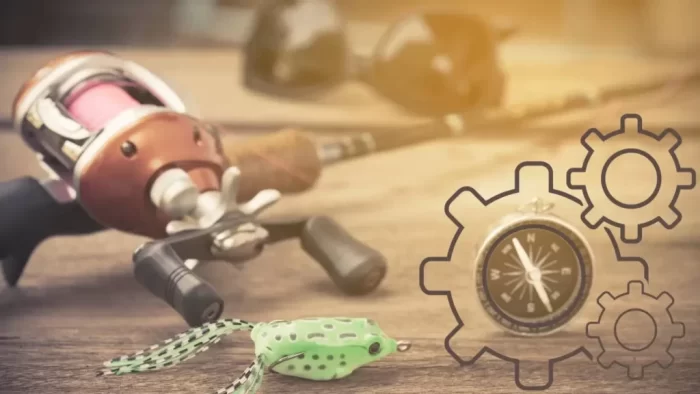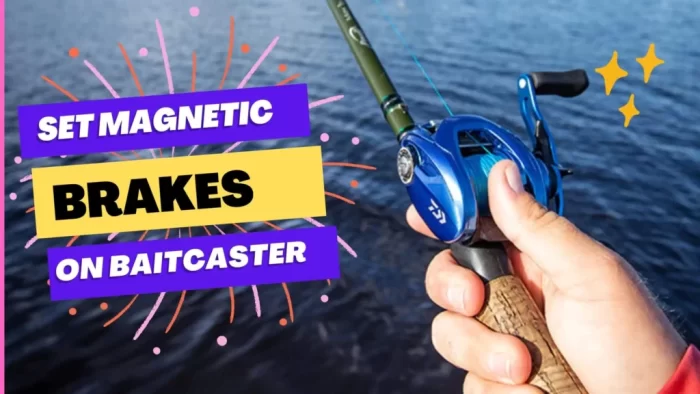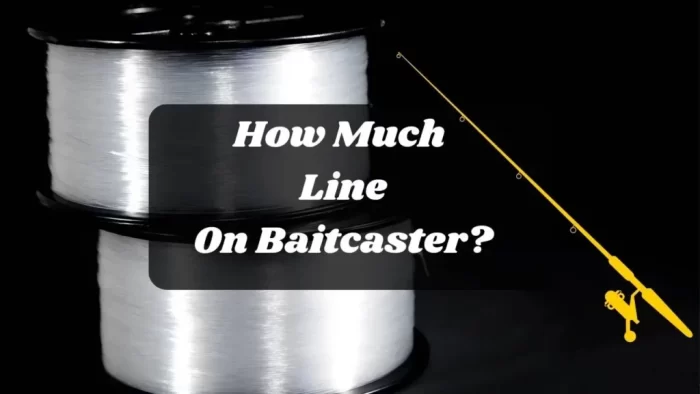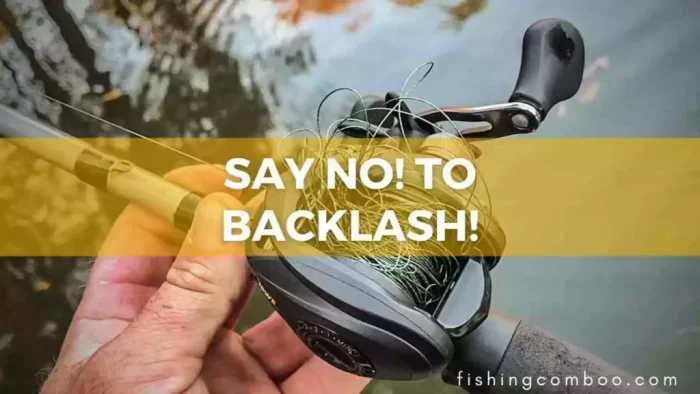
Are you a fishing enthusiast looking to take your game up a notch? Adjusting the centrifugal brakes on your baitcaster may be just the ticket.
Baitcasters are great tools for casting accurately and precisely, but they require some setup before performing at their best. This guide will show you how to adjust centrifugal brake on baitcaster for maximum performance.
We’ll cover what it is, how it works, why you should adjust it, how to adjust it step by step, and finally, the advantages and disadvantages of it. So if you’re serious about taking your fishing game to the next level, read on!
What is a Centrifugal Brake
A centrifugal brake is a cast control device found on bait casters. It consists of two weighted arms located inside the reel’s side plate that is positioned to resist casting.
When the spool spins, these arms move outward and interact with the shell of the baitcasting reel to create drag and reduce line speed. This helps to prevent bird nests and overruns that can occur when the cast is too fast or inaccurate.
table of contents
How to Adjust Centrifugal Brake on Baitcaster Step by Step
The brake, also known as the “casting brake,” is one of the most important components of any baitcasting reel. It’s responsible for determining how far your lure or bait will travel with each cast by applying friction to the spool.
If the brake isn’t properly adjusted, it can either result in your bait flying much further than you intended or not having enough distance for successful casting.
Fortunately, adjusting centrifugal brakes on a bait caster isn’t too hard! If you’ve never done this before, here’s an easy step-by-step guide on how to set centrifugal brakes on bait casters.
Step 1: Identify the Brake
It is typically located at the rear of the reel, near where you attach your fishing line. It consists of a series of metal arms connected to a housing and can be moved back and forth by turning small adjustment screws.
Step 2: Open the Lid

Most baitcasters have a lid that covers the centrifugal braking system. You’ll need to open this up to make any adjustments.
Step 3: Adjust the Brake Settings
Once you’ve opened the lid, you can adjust the brake by turning the adjustment screws on either side. Turning these screws clockwise will increase the braking force, and turning them counter-clockwise will decrease it.
Before you start adjusting centrifugal brakes, it’s a good idea to familiarize yourself with the two settings. The “ON” setting will apply more friction, and the “OFF” setting will reduce friction.
Generally, baitcasting reels have 6-8 brake arms, so you can adjust the centrifugal brakes by turning the screws on each arm. Start by turning all of the screws to their ON positions. A small notch or line on each component typically marks this.
Step 4: Test the Reel
Now that you’ve adjusted the brake, it’s time to test it out! Attach your fishing line to the reel and cast away. You should be able to see how far your lure is traveling with each cast and make adjustments as needed.
If your lure is flying too far, try turning each screw one-quarter turn at a time until the distance is reduced to your preference. Conversely, if you need more distance, turn each screw one-quarter turn counter-clockwise to allow for more lines to be released.
Step 5: Lock the Brake Settings
Once you’ve perfected your brakes settings, you’ll want to ensure they stay in place. Most baitcasters come with a locking mechanism that will keep the arms from shifting during use. Simply turn each screw until it clicks, and your desired settings will be locked.
Step 6: Baitcasting Reel Maintenance

To keep your baitcaster functioning properly, it’s essential to regularly clean and lubricate the brake. Light oil and a cloth can be used for this task.
Wipe away any dirt or debris from the arms and apply just a few drops of oil, so they move freely without sticking.
And there you have it – with just a few simple steps, you can set the centrifugal brakes on your baitcaster and ensure optimal casting performance! With a bit of practice, you’ll be able to make quick adjustments between different lures or baits as needed. So don’t hesitate – get out there and start casting!
How Does a Centrifugal Brake Work?

It uses centrifugal force to create drag on the spool. As the spool spins, the weighted arms move outward and interact with the shell of the reel.
This causes the spool to slow down, thus reducing the speed of your line. This can be a huge advantage when fishing accuracy is paramount, like in a creek or around submerged stumps.
When the spool of your baitcaster is spinning, it will rotate around an axle that has two weighted arms located inside the reel’s side plate.
When the spool spins faster than a certain speed (set by you), those arms move outward and create drag against the shell of the baitcasting reel to reduce its speed.
This helps to prevent backlash problems and overruns that can occur when the cast is too fast or inaccurate. It’s like having a brake on the inside of the reel, slowing down the spinning spool so that it doesn’t get out of control.
To understand this better, think of your car’s brakes. When you step on the brake pedal, it slows down your car by creating drag against the wheels. This works similarly to slow down your baitcaster spool so that you can make more accurate casts.
Why Should You Adjust Your Centrifugal Brake?
Adjusting the centrifugal brake on your bait caster is essential for a few reasons.
First, it will help you make more accurate casts. When your spool is spinning too quickly, it can be challenging to maintain accuracy, as the line tends to spin off in different directions.
By reducing the speed of your spool with this brake, you can better control where your cast goes.
Second, it will reduce the risk of backlashes. When casting too quickly or with too much line out, the line can tangle and form a bird’s nest. To prevent this from happening, it’s essential to slow down your spool using the centrifugal braking system.
Learn About: How to Tune a Baitcaster | Prevent Backlash
Finally, it will help conserve your line. When the centrifugal brake is adjusted correctly, you’ll be able to cast further without having to use more lines. This means less time spent re-spooling and more time fishing!
Advantages and Disadvantages of Centrifugal Brakes
This brake can be a great tool when used correctly. It helps you to make more accurate casts, reduces the risk of backlashes, and conserves the line. But like any tool, it has its pros and cons. Let’s discuss them in detail.
Advantages Of Centrifugal Brake
- It helps you make more accurate casts.
- Reduces the risk of backlashes and line tangles.
- Conserves line, so there is less time spent re-spooling.
- Suitable for a variety of fishing conditions and situations.
- Easy to adjust on most baitcasting reels.
Disadvantages Of Centrifugal Brake
- Not suitable for very heavy lures and baits.
- It would be difficult to adjust if you have a low-quality baitcasting reel.
- It reduces the distance of your casts if it is set too tightly.
Frequently Asked Questions
Why does my baitcaster backlash every cast?
There are several potential causes for a baitcaster to backlash every cast. The most common reason is an improper setup, such as having the wrong amount of line on the spool or using a lure or bait heavier than the line. If the drag setting is too tight, this can also cause backlashing.
What is the dial on the left side of a baitcaster?
How do you throw farther with a baitcaster?
To throw farther with a baitcaster, start by doing essential maintenance such as cleaning and lubricating the reel. Then make sure the line is spooled correctly and there isn’t any debris on it.
Additionally, since a baitcaster reel operates differently from a spinning reel, it helps to practice casting with different lures to get used to the feel and motion of casting with a baitcaster.
Finally, try different techniques, such as flipping or pitching lures, to maximize casting distance. When executing these techniques, use longer rod lengths and lighter lines for better results.
Final Words
In conclusion, whether you opt for a centrifugal braking system depends on your fishing style and preference. If you’re an experienced angler who requires accuracy and precision, this brake is an invaluable tool, and I’ll prefer magnetic brakes over it.
However, if you’re new to fishing or don’t require such accuracy, it may be best to leave the brake off or set it very lightly.
Whichever way you decide to go, just make sure that you adjust your centrifugal brake regularly and adequately to ensure that it works optimally. Tell us in the comments section which braking systems you like.





